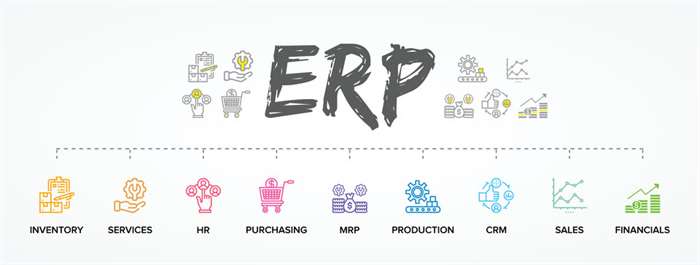What’s Ci Cd? Steady Integration And Continuous Supply Defined
Most steady deployment instruments offer integrations with well-liked growth environments, version management methods, and other DevOps tools. This allows for a workflow from coding to deployment, aligning with the instruments the development staff makes use of. Microsoft Azure DevOps Server is a collaborative software growth device with a centralized version management system with integrated project administration options.

With Harness CI, you get a self-service CI tool built on container applied sciences, which means all extensions are standardized and builds are isolated. The master displays source-code repositories for changes, coordinates duties for employees, and reviews outcomes to finish customers and developers. Buddy permits engineers to construct and handle complex CI/CD pipelines shortly and with ease. It provides engineers direct deployment entry to public repositories similar to GitHub.
Devops Collaboration And Agile Project Administration Tools
Many corporations get stuck with flaky scripting, guide interventions, complex processes, and enormous unreliable tool stacks across various infrastructure. Software teams are left scrambling to understand their software program provide chain and discover the foundation cause of failures. What makes Azure DevOps stand out is its ability to wrap all the above in a single window. Very few tools encompass the end-to-end software development lifecycle automation like Azure DevOps. With its extensive plugin ecosystem and customization choices, Jenkins stays a preferred alternative among improvement groups for its flexibility and flexibility to various project necessities. Its energetic neighborhood support and longevity make it a mature and reliable CI/CD software.
- It excels in CI/CD, rushing up deployment cycles by rapidly shifting code from repository to reside environment.
- Apache Ant (“Another Neat Tool”) is the oldest software on this listing and may be thought-about a precursor to Maven.
- These integrations enable developers to create cohesive and automatic workflows that could be finely tuned to their needs.
- Continuous delivery instruments also provide dashboard and reporting functions, that are enhanced when devops groups implement observable CI/CD pipelines.
- Travis additionally supplies fully configured and often up to date images for build environments which you can nonetheless customize if you’d like.
The rationale is that it’s simpler to establish defects and other software quality issues on smaller code differentials than on larger ones developed over an extensive interval. In addition, when builders work on shorter commit cycles, it’s less doubtless that multiple builders will edit the identical code and require a merge when committing. Continuous integration and steady supply (CI/CD) are greatest practices for software program improvement.
Selection Standards For Ci/cd Tools
This approach allows for model control of the infrastructure, declarative management, and automated rollbacks. FluxCD supports multiple deployment strategies, canary releases, and rollbacks, and integrates with other instruments within the Kubernetes ecosystem. FluxCD is an open-source steady delivery software constructed for Kubernetes.

This step ensures developers solely commit code to model control after code adjustments have handed regression exams. Continuous delivery (CD) is the automation of steps to facilitate changes into production safely. This focuses on the release and launch technique, while continuous deployment focuses on precise deployment. Continuous integration (CI) is the practice of automating the combination of code modifications from a quantity of contributors into a single software program project. It’s a DevOps best apply, permitting developers to regularly merge code adjustments right into a central repository where builds and tests run. Features I favored when working with Argo CD for Kubernetes improvement embody how simple it made it to usher in GitOps principles.
Cloud/iaas Tools
With these tools, you get the precision of a steady integration software, the adaptability of self-hosted solutions, and the innovation of templates to excellent your supply pipeline. This method fosters a extra efficient workflow, allowing teams to ship updates more frequently, react to modifications promptly, and align closely with business necessities and customer needs. Spacelift is a classy infrastructure administration answer that helps Terraform, OpenTofu, Terragrunt, Pulumi, CloudFormation, Ansible and Kubernetes workflows.
Travis CI routinely detects new commits made and pushed to a GitHub repository. And after each new code commit, Travis CI will build the project and run checks accordingly. GitLab lets you trigger builds, run tests, and deploy code with each commit or push. You can construct jobs in a virtual machine, Docker container, or on one other server. There are many approaches to utilizing containers, infrastructure as code (IaC), and CI/CD pipelines collectively. Free tutorials such as Kubernetes with Jenkins or Kubernetes with Azure DevOps can help you discover your options.
CircleCI additionally hosts steady integration beneath the cloud-managed option or runs behind a firewall on non-public infrastructure. Developing a CI/CD pipeline is a regular follow for companies that regularly enhance purposes and require a dependable delivery course of. Once in place, the CI/CD pipeline lets the team focus extra on enhancing functions and less on the details of delivering it to varied environments. A extra subtle continuous delivery pipeline might need additional steps similar to synchronizing data, archiving data assets, or patching purposes and libraries. This guide will focus specifically on the 15 steady delivery instruments every DevOps engineer must be acquainted with at present.

Experience their advantages firsthand and revolutionize your software program journey. GitLab CI/CD is an built-in feature of the GitLab VCS platform that automates the CI/CD workflow. With a unified experience that covers the whole SDLC, GitLab CI/CD facilitates swift iterations, robust testing, and dependable deployments, all inside the GitLab setting.
It permits steady delivery and offers a user-friendly interface to create CD pipelines. You can automate system checks, manage your rollouts, and set off pipelines via git events. While it is a CD device, it connects seamlessly with CI tools like Travis CI, Jenkins, Docker, and more integrations. CircleCI permits engineers to build, test, and deploy software at scale. You can integrate it instantly with your model control system, similar to GitHub or Bitbucket, and it will validate your code modifications in real time. CircleCI also helps manage your construct logs, access controls, and testing.
Plus CloudZero offers value insights in their own language, similar to Cost per Deployment, per Environment, per Service, per Feature, per Dev Team, etc. RunDeck is particularly suited for companies planning emigrate to the cloud. It additionally uses artificial intelligence to remove repetitive duties and connects with DevOps tools like Slack, Dropbox, Confluence, Google Drive, and Evernote. It mechanically queues, executes, and stories on jobs every time the resources it wants are available.
Ninjaone – Greatest For Streamlined Software Program Deployment
This ends in the need for proper steady integration and steady supply (CI/CD) tools. A “good” CI/CD software can leverage teams’ present workflow, to best exploit the automation function and create a solid CI/CD pipeline, and give teams the increase they need to thrive. Most CI/CD instruments let builders kick off builds on demand, triggered by code commits in the model control repository, or on an outlined schedule. Teams need to find out the construct schedule that works best for the size of the staff, the variety of every day commits expected, and other application considerations.
GoCD is available for Windows, Linux, and Mac and runs cloud-native deployment on environments such as Kubernetes, AWS, and Docker. Jenkins split from Hudson (another CI tool) after a dispute with Oracle. It is a free and open-source automation server for web-based and on-premises projects.

It lets you configure and define information middle infrastructure through HashiCorp’s customized configuration language or JSON. Terraform is suitable with a variety of Cloud suppliers, including Azure, VMWare, and AWS. Is a product administration software program suite that specializes in roadmap creation. You can create strategic enterprise fashions tools used for continuous integration, delegate duties, in addition to visualize, collaborate, and crowdsource concepts from prospects and colleagues. Like Codemagic, Bitrise is a CI/CD software for developing, testing, and rolling out cellular apps. The cellular CI/CD mechanically configures workflows so you can simplify integrating and deploying your Android, React, IOS, Native, flutter, and macOS apps.
An Action inside GitHub Actions is a discrete unit of automation that performs a selected task within a workflow. Jenkins is a well-established platform with an active neighborhood providing support and upkeep. You’ll find integrations with all main model control systems, along with a broad range of community-supported plugins to customise your Jenkins server.

Some tools particularly handle the mixing (CI) aspect, some handle development and deployment (CD), while others focus on steady testing or associated capabilities. With options for knowledge management and project collaboration, Confluence offers a single supply of fact, enabling teams to collaborate from just about wherever. With every little thing in one area, Confluence keeps everybody in control with project plans and standing updates.
On-premises Vs Cloud
Semaphore’s workflow visualization and parallel execution enable developers to deploy code extra efficiently, thus decreasing the time between updates. Its Docker Layer Caching, computerized scaling, and lightweight agent additional enhance its speedy deployment capabilities. Important integrations embody GitHub, Bitbucket, Docker, Slack, and varied cloud providers, making a cohesive ecosystem for continuous deployment.

Here’s an in depth breakdown of the specific criteria that matter most for these specific forms of software program. I’ve wrestled with the intricacies of supply code, employed automation instruments, and cultivated a dynamic CD platform. I’ve felt the load of microservices challenges, the urgency of on-demand shifts, and the unpredictability of rollbacks. So, should you’re feeling overwhelmed by unpredictable deployments or intricate dependencies, learn and lean on these tools.
